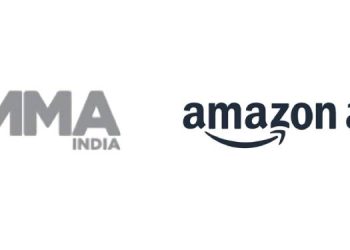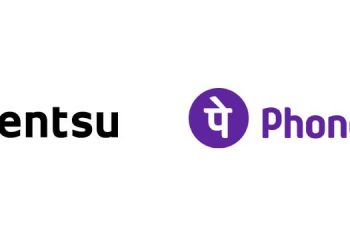
A vintage 1970s print ad of Life Insurance Corporation (LIC) shows the face of a young lad smiling as two protective hands shield him from the metaphorical dangers of life. It reads: Let him feel the warmth of your protection.
Cut to the twenty-first century: A girl is crying as she loses sight of her father in a crowded marketplace. Her father is equally distressed as he frantically searches for his daughter, before finally spotting her in a corner shop. The ad now says: ‘Zindagi Ke Saath Bhi, Zindagi Ke Baad Bhi’ (In Life and After Life). The erstwhile hands are now replaced by a tight hug that acts as a protective cover.
LIC’s advertising in the last four decades has seen a complete transformation, which, ironically, also sums up its journey from being a solitary reaper in a state-controlled industry to a life insurer fighting for its place (some say rightful place) in a hyper-competitive market.
LIC executives insist holding a monopoly did not assure brand salience. Marketing brand LIC was as much a challenge then as it is now. For a country that had celebrated its independence only 25-30 years earlier (when speaking of the 1970s), insurance was not something paramount for its people – eking out a living was. So, LIC had multiple roles to play – provide knowledge, explain the importance of insurance as an investment and an instrument for life-cover, and assuaging people’s fears about the fate of the money collected for insurance (there were few investment options then and for most a bank account and the post office were ways to save money). ‘Using People’s Money for People’s Welfare’ – thematic ads were created back then as an answer.
By the 1980s, LIC was changing. It woke up to the audio-visual medium and attempted to imprint the message that there was no alternative to life insurance. N C Sharma, former MD of LIC, says, “The endeavour was to drive home the message that insurance means LIC and LIC means life insurance.”
LIC communicated the message strongly in its popular ‘Roti, Kapda, Makan aur Jeevan Bima’ (Food, Clothes, Shelter and Life Insurance) ad series in the 80s on Doordarshan. LIC also relied on print ads, outdoor and word-of-mouth to spread the message. LIC remains one of the largest users of outdoor, says Sashidharan Nair, senior partner, RKSwamy/BBDO, which has managed the LIC advertising account for the last 20 years. “You can see it everywhere. The idea is to reach as many people as possible,” he says.
Almost every Indian city has multiple LIC offices that act as landmarks in their respective areas – a form of advertising, say LIC officials.
LIC’s internal communications, too, act as a crucial marketing tool: Reaching out to employees, investors (through its claim redressal mechanism) and its sponsorships of events, tournaments and social causes.
But LIC’s big leap came when the sector opened to private players in 1999. Nair of RK Swamy/BBDO, says, “The 90s was when LIC really came into its own. It began focusing on brand-building more aggressively. While product advertising was always there, the effort became more structured.” The opening up of insurance also meant LIC employees and agents were anxious to go out and solicit business or retrenched.
G N Bajpai, the former chairman of LIC and, later, the Securities and Exchange Board of India, recalls he conducted frequent town halls with employees and agents (it had over 500,000-600,000 agents then) to convey the message of stability. This also turned out to be a brand makeover.
“The LIC employee and agent are the messengers of the company. Unless their questions were answered, there was no use of external branding. We had even the junior-most staff attend these town-halls and they had the authority to ask any question of the chairman,” Bajpai says.
Around the same time, subsidairies such as LIC Mutual Fund and LIC Housing Finance were launched, which also advertised heavily, pushing the LIC brand name.
RKSwamy/BBDO did a number of ads for products such as Jeevan Saral and Jeevan Anand apart from corporate ads such as ‘Na Chinta, Na Fikar’ (No Doubts, No Fear). The ad agency also created seven years ago the popular testimonial series of TV ads – Why Go Anywhere Else? – to capture what investors of LIC felt about the company. While the testimonial commercials continue to run, LIC’s Eureka moment came with the tagline – “Zindagi Ke Saath Bhi, Zindagi Ke Baad Bhi” (In Life and After Life) conceived by another agency, Mudra, in 1999.
Madhukar Kamath, CEO & MD, DDB Mudra Group, who was involved with the campaign that unveiled the line, says, “The problem that LIC was grappling with was: What to communicate? LIC products could not be pushed as a savings instrument nor could one focus on death, that would be too harsh. That is when the line was conceived,” says Kamath.
Mudra did a commercial which shows a woman called Mrs Sharma, a widow with the responsibility of bringing up her children on her own. She explains through the commercial how her late husband secured the future of his family by investing in LIC.
JWT, another LIC roster agency, took this thought to the next level a decade later (2010) with a campaign that positioned LIC as a stress-buster and solutions provider. The lost-girl ad was one of its series.
Some of LIC’s other ad agencies include FCB-Ulka, Prachar, Crayons and Rediffusion Y&R. The last three were empanelled only six months ago. FCB-Ulka has been with LIC for a decade, involved with its logo change five years ago and product ads.
Nitin Karkare, COO, FCB-Ulka, Mumbai, says, “The company logo was ‘Life Insurance Corporation of India’. However everyone referred to the company by its initials LIC. We thought the logo should reflect that. Using LIC also helped us when we were creating all the branding elements as it telegraphically communicated the company name.” The use of yellow with the LIC blue also helped it stand out better.”
Source : BS

















